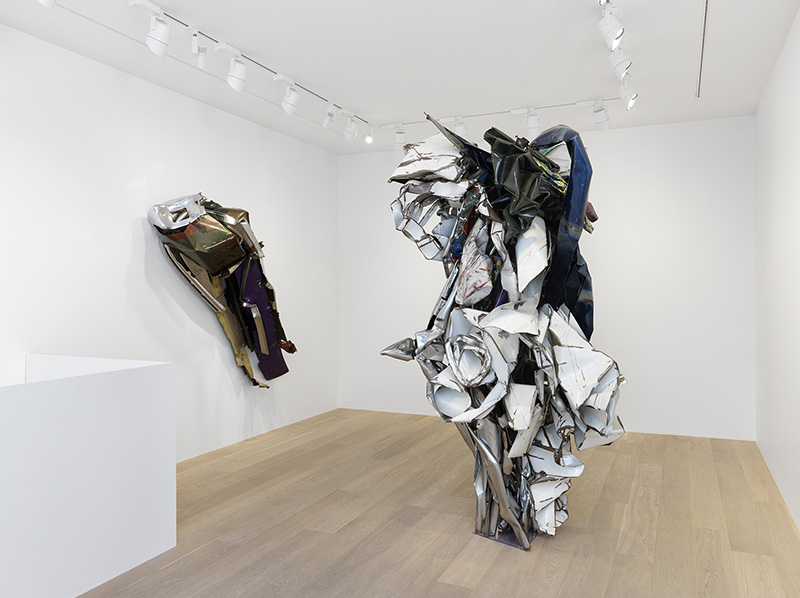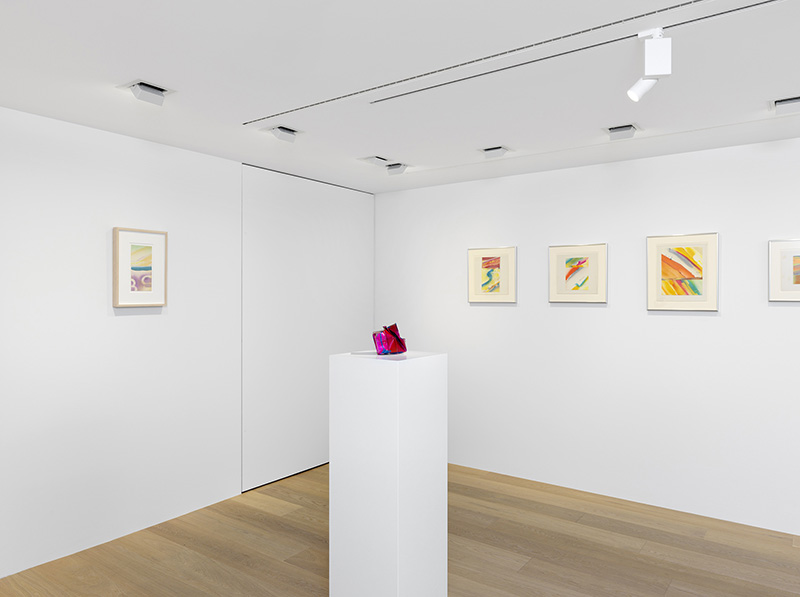ART CITIES:Geneva- John Chamberlain
 John Chamberlain is known for his long career of making vividly colored and vibrantly dynamic sculptures using discarded automobile parts that he twisted and welded into monumental shapes. He used the early Modernist techniques of Collage and Assemblage at a magnified scale and he emphasized the brilliant colors of automotive paint.
John Chamberlain is known for his long career of making vividly colored and vibrantly dynamic sculptures using discarded automobile parts that he twisted and welded into monumental shapes. He used the early Modernist techniques of Collage and Assemblage at a magnified scale and he emphasized the brilliant colors of automotive paint.
By Dimitris Lempesis
Photo: Gagosian Gallery Archive
With works dating from 1975 to 1988, the exhibition “Poetic Form” focuses on John Chamberlain’s mid-career return to the use of car metal as a sculptural material, as well as his long-term interest in vibrant, colorful expression in two and three dimensions. Chamberlain broke from his pattern of using discarded autoparts in 1965, only to return to it in 1972. At times, his riotous structures would adhere to certain geometries, the wall relief, “Chamouda” (1975), is from a series of painted and chrome-plated steel sculptures that were each tilted to the left at an angle of 45 degrees. Bright pops of colored metal are variously intertwined with glinting steel, and the visual effects shift with the viewer’s movement. Chamberlain also gave structure to otherwise unconstrained abstraction in the series of drawings from “View from the Cockpit” (1976). Each drawing comprises three cut pieces of paper, collaged vertically and with conflicting patterns of delicate, sprayed pigment. The thin center band that bisects the upper and lower halves of every sheet suggests the sequential frames of a film strip, while alluding to the horizon of an indiscernible landscape. The artist had a keen appreciation of poetry, fostered during a year spent at Black Mountain College, it was at this time that language began to impact Chamberlain’s aesthetic approach. “Gondola Walt Whitman” (1981–82), like all works in the series “Gondola” is titled in homage to a writer who Chamberlain admired. In works from the late ‘80s, such as the wall relief “Madam Meux” (1987), the same playful approach to wording is evident in his use of alliteration in the title while the name also suggests that the sculpture’s graceful curve refers to the supine feline body. Chamberlain showed a new generation that sculpture could be made of anything, and in the late ‘60s Minimalist sculptors like: Carl Andre, Dan Flavin, Donald Judd, and Richard Serra began to work with industrial sheet metal, fluorescent light tubes, extruded aluminum, and poured metals. They carried his ideas into room-sized installations that challenged all interpretations: their physical existence was their meaning.
Info: Gagosian Gallery, 19 place de Longemalle, Geneva, Duration: 7/9-3/11/16, Days & Hours: Tue-Sat 10:00-18:00, www.gagosian.com



